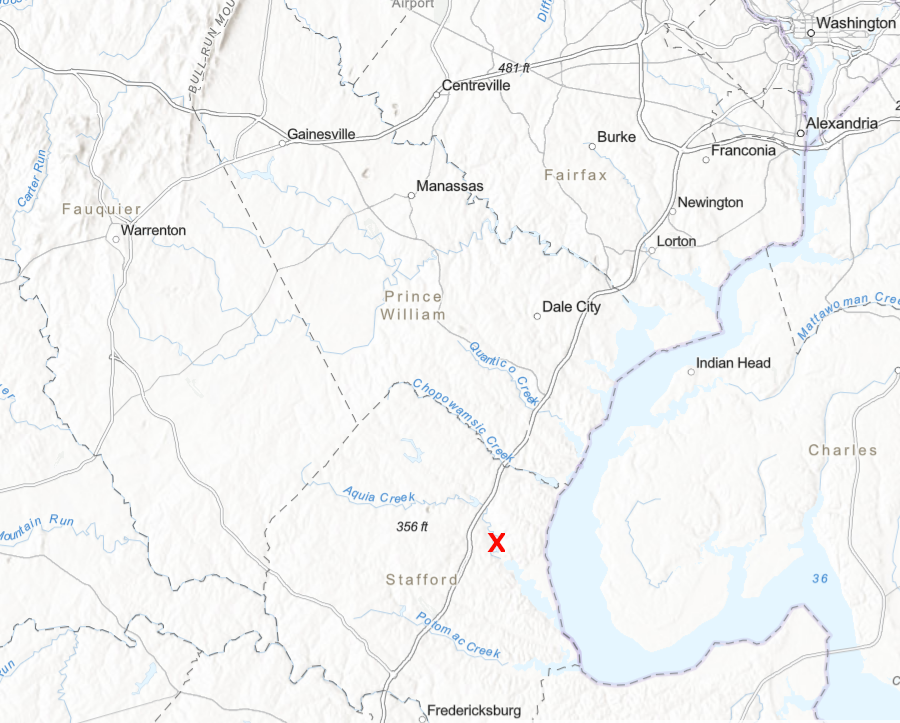
Government Island (Red X) was on a navigable section of Aquia Creek, facilitating transport of stone to Washington DC for building the White House and Capitol
Source: ESRI, ArcGIS Online

Government Island (Red X) was on a navigable section of Aquia Creek, facilitating transport of stone to Washington DC for building the White House and Capitol
Source: ESRI, ArcGIS Online
Virginia colonists in the 1600's had to use wood and clay (baked into bricks) to build houses and other structures. There was plenty of hard granite at the Falls of the James River, but it was too difficult to excavate with the tools available in the 17th Century. Those granite quarries flourished after the American Revolution.
Importing building stone from England during the colonial era was one option, but that was an expensive option. Arthur Allen imported sandstone from England in 1665 when he constructed his brick house in Surry County, now known as Bacon's Castle. Having a roof with sandstone shingles reduced fire danger, but was primarily a means of displaying wealth in order to maintain Allen's high social status. When Christ Church was completed in 1735 in Lancaster County, Robert "King" Carter demonstrated his wealth by importing limestone blocks for the church's floor pavers.1
The surface of the Coastal Plain is composed of loose sand and gravel. That material is too unconsolidated to use for building stone. The hard crystalline bedrock exposed at the Fall Line is buried too deep by the sediments to be accessible on the Coastal Plain.
The Coastal Plain sediments had washed off the North American continent since the Alleghenian Orogeny and the breakup of Pangea over 200 million years earlier. Those sediments had settled in the shallow Atlantic Ocean waters, and were then covered by younger formations as erosion continued. The Salisbury Embayment, between modern New Jersey and the James River, accumulated multiple layers of sediments.
The Aquia Formation formed 55-60 million years ago. At that time in the Cretaceous Period, soon after the dinosaurs disappeared, the eastern edge of Virginia was underneath the Atlantic Ocean.
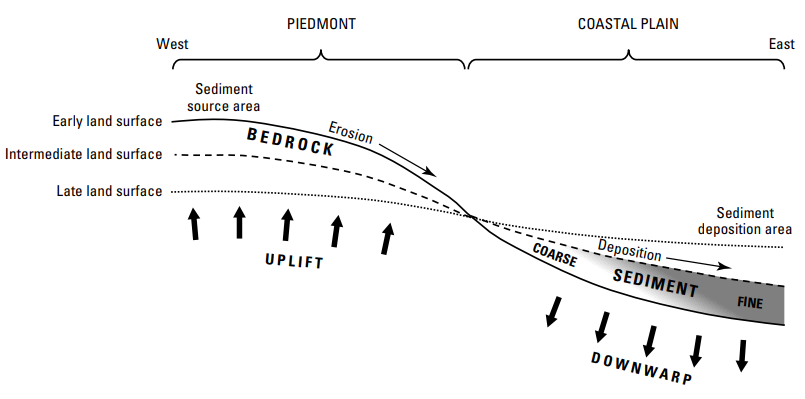
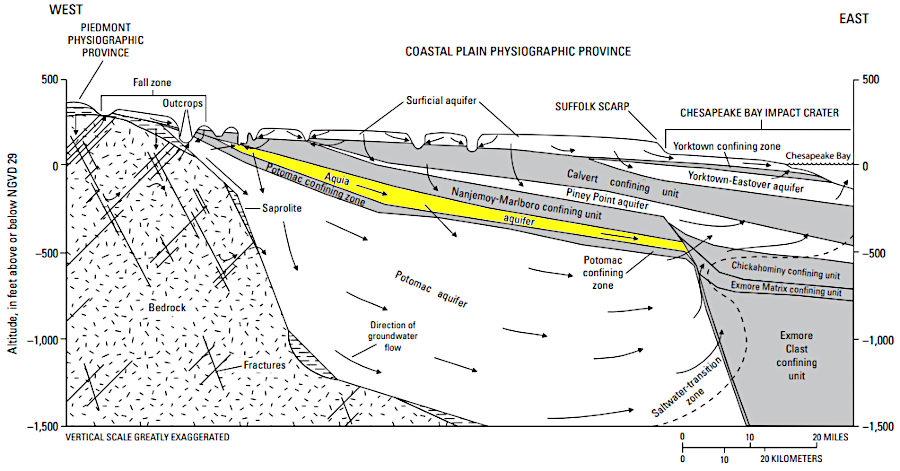
the sand grains in the Aquia Formation eroded off the Piedmont and accumulated at the edge of the Atlantic Ocean 55-60 million years ago
Source: US Geological Survey (USGS), Sediment Distribution and Hydrologic Conditions of the Potomac Aquifer in Virginia and Parts of Maryland and North Carolina (Figure 25, Figure 3)
The Aquia Formation has a significant percentage of blue-green glauconite, a mineral which forms on continental shelves with enough organic matter that oxygen levels are low. Geologists assign different names to different formations, because those sediments have a different ratio of sands, silt, and other materials which eroded at later times plus shells from plankton and other life forms in the ocean. Near Aquia Creek, the Brightseat Formation deposited before the Aquia Formation and the Nanjemoy Formation was deposited later. Further south, the Aquia Formation is mapped on top of the Potomac Formation. The Aquia Formation is exposed on the surface as far south as Hopewell.2
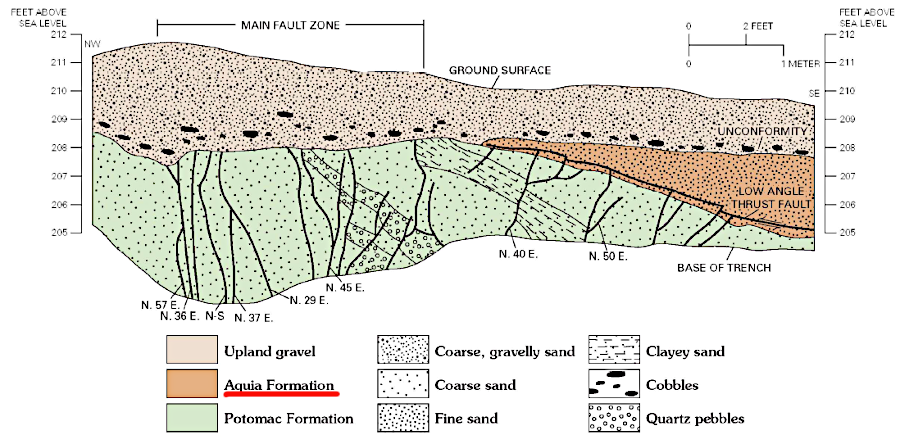
sediments eroding after the breakup of Pangea were deposited on top of crystalline bedrock (Potomac Formation), and then the Aquia Formation was deposited 60-55 million years ago
Source: US Geological Survey (USGS), Geologic map of the Stafford quadrangle, Stafford County, Virginia
The weight of the overlying sedimentary deposits helped compress the quartz, feldspar, and other grains that formed the Aquia Formation. Under pressure, silica cemented the quartz sand, pebbles, and clay pellets together. In places, Aquia Formation sediments have been squeezed and glued together tightly enough over the last 55 million years to make stone suitable for foundations and walls of buildings. Dark streaks in the light sandstone show where raindrops dissolved iron at the surface, then carried it down to a depth where there was no oxygen and the iron precipitated between grains of sand.
As European settlement moved up the Potomac River in the 1700's, Virginia colonists took advantage of outcrops of sandstone which were close to navigable waters. Wealthy members of the gentry had enslaved and hired workers dig into outcrops of Aquia sandstone, cutting out blocks of stone that were moved with ropes, pulleys, and boats for use in construction projects. Freestone Point got its name because the bedrock exposed there was easy ("free") to carve into blocks of a desired shape, since incomplete cementation of the sand grains allowed the stone to be split in any direction.
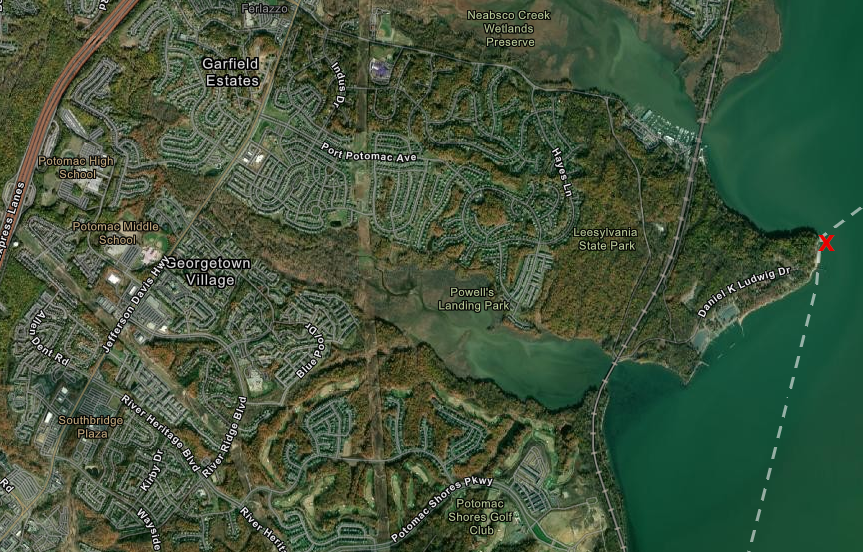
Freestone Point (red X) is now part of Leesylvania State Park
Source: ESRI, ArcGIS Online
The grains of sand in the Aquia Formation could be cut in different directions. It was known as "freestone" because even curved shapes could be formed from the stone, similar to carving marble. In Virginia, quarries in the Aquia Formation were opened from Mount Vernon to the Rappahannock River.
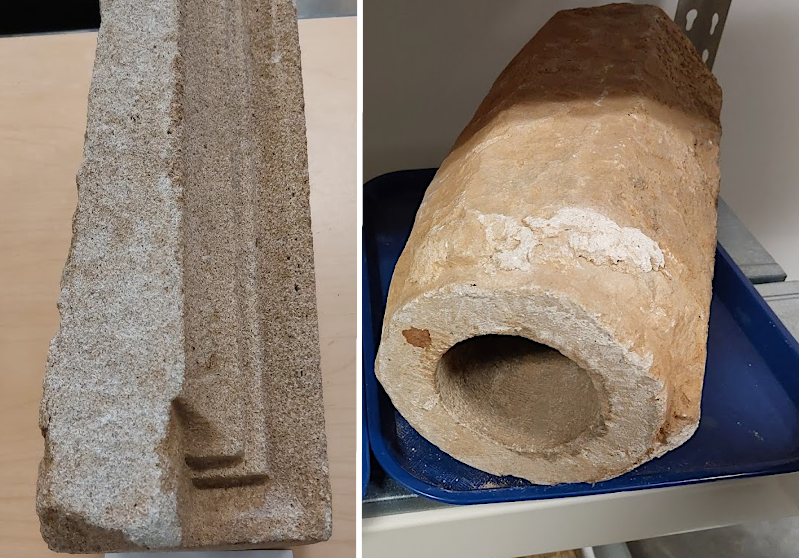
the Germanna Foundation has excavated carved sandstone materials from the site of Governor Spotswood's mansion house on the edge of the Rivanna River (Orange County)
The most significant historical quarries in the Coastal Plain were developed on a 17-acre island in Aquia Creek. Blocks of Aquia sandstone were quarried there. The unfinished blocks, known as "scabble," were transported via boat to mansions in Tidewater and later to Washington, DC. Masons at the final destination shaped the blocks to final dimensions, including any carving needed for decorative purposes.
A canal was constructed to allow scows to get closer to the quarries, reducing the distance that heavy blocks of stone were transported on land by rolling on top of wooden poles. The shallow-water scows would float the blocks to a wharf on deeper water, at which cranes lifted the stone onto larger boats.3
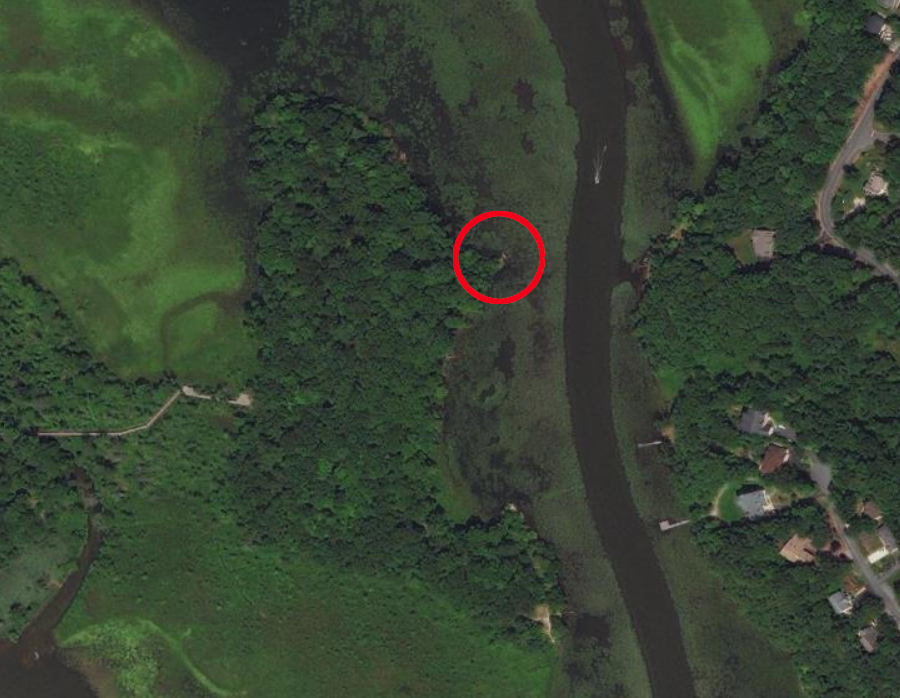
blocks of unfinished sandstone were shipped from Government Island via scows that loaded at a stone wharf (red circle)
Source: ESRI, ArcGIS Online
The Brent family owned the Aquia Creek quarry after purchasing Wigginton's Island in 1694. In 1786 they sold one acre of Brent's/Wiggington's Island, with the most-valuable access to the stone, to a mason named Robert Steuart. Steuart marked his property boundaries on Brent's/Wiggington's Island by carving "R S" in the soft stone. He also owned another sandstone quarry about a mile away on Rocky Run.
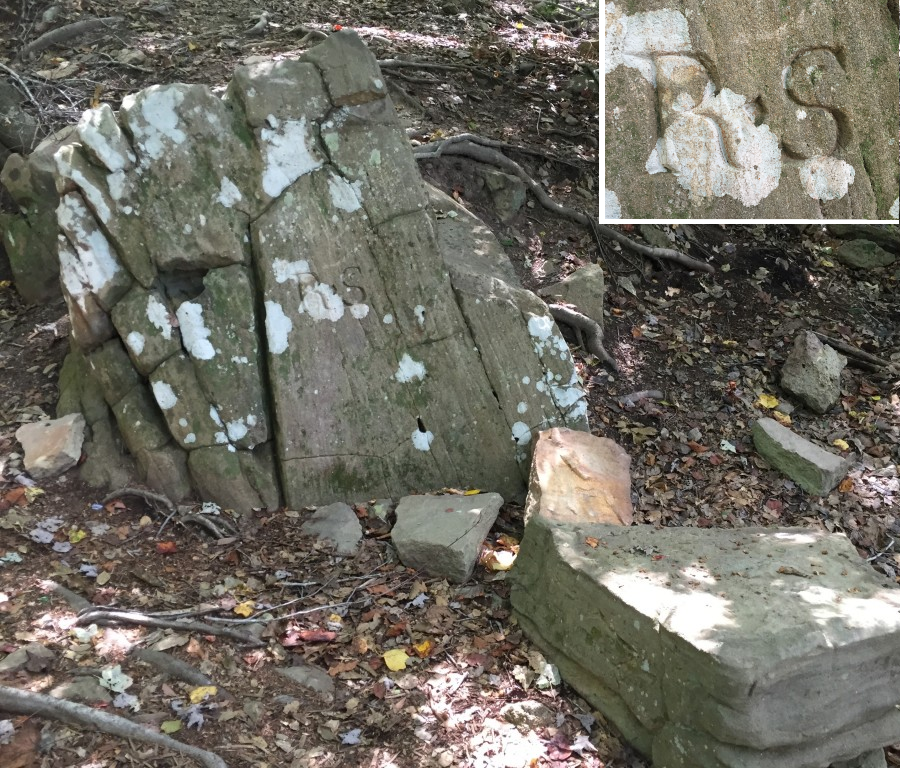
Robert Steuart, a stone mason, purchased one acre of Brent's/Wiggington's Island
Source: Library of Congress, Pic of the Week: Public Quarry on Government Island, Virginia (photos by Fernando O. Gonzalez)
In 1786, George Washington used Aquia sandstone for the steps at Mount Vernon. The rock was also used for the original walls in the cellar of the mansion. The air conditioning system installed in 1999 did not provide climate control for the cellar, and changing humidity has caused the sandstone walls to degrade.
The Mount Vernon Ladies Association launched a fundraising campaign in 2023 to move electrical and heating ventilation air conditioning (HVAC) equipment out of the mansion to a new underground basement, as part of a 2024-2026 renovation of Mount Vernon. When completed, visitors will finally be able to tour the cellar and see the building's stone foundations.
In 1791, now-President Washington and Pierre L'Enfant chose to use Aquia sandstone for the new buildings constructed to house the new Federal legislature and executive branches of government, once the capital moved south from Philadelphia to the District of Columbia in 1800.
The Federal government purchased the rest of Brent's Island on December 2, 1791. The site has been known as Government Island ever since.
The sandstone from four quarries there, plus the leased Gibson Island quarry nearby, was used to build the President's House (White House), the US Capitol in Washington, DC, the Old Patent Office (now the National Portrait Gallery), and other structures in the national capital between 1791-1825. The quoins in the walls of Fort McHenry, which withstood British bombardment in 1814 so "our flag was still there" when Francis Scott Key looked the next morning, are carved from Aquia sandstone.
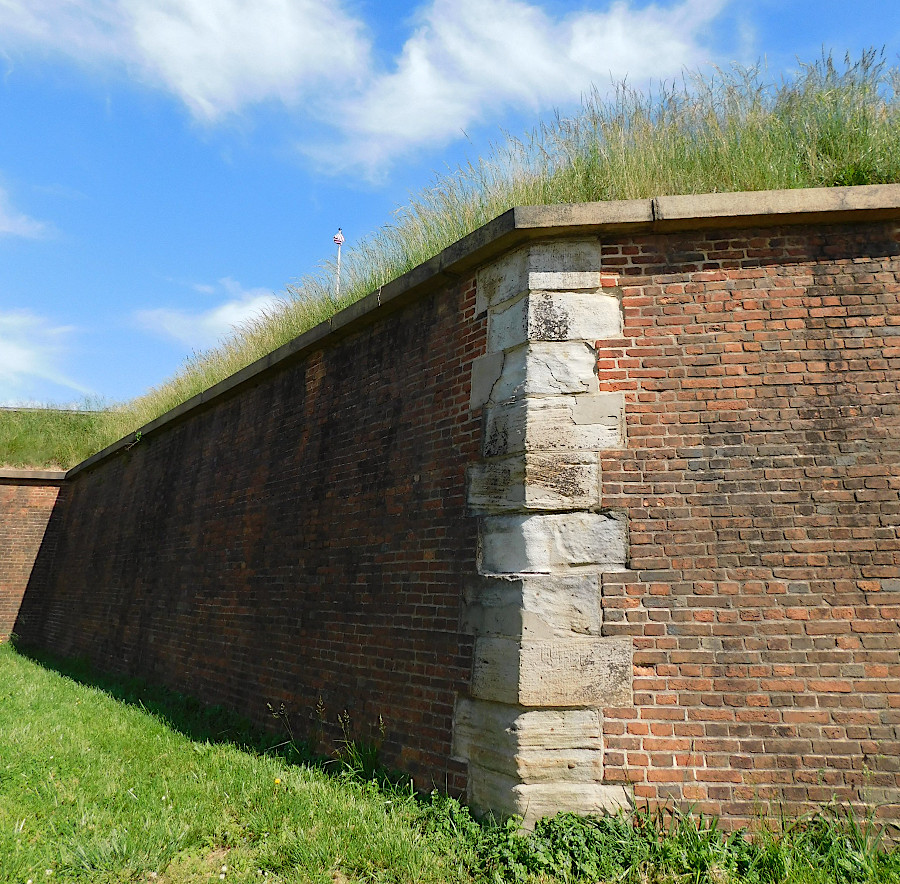
Aquia sandstone forms the white quoins at the corners of Ft. McHenry's brick walls
Source: Jimmy Emerson, DVM, Fort McHenry Wall
Quarries closer to the District of Columbia provided other types of stone for foundations, but the white Aquia sandstone was used to make the exterior of public buildings appear more impressive.
Government officials first paid local white men for the use of 25 "able bodied negroe men slaves," who were not paid for their labor, to excavate stone at Government Island. They triggered the first labor dispute on a Federal construction project
Starting in 1794, the Federal government hired contractors to provide stone from Government Island. Sheds with tables inside were built on the northeastern corner of the White House property, and enslaved workers operated a stone yard there. Large blocks of stone were cut into the shapes desired for each stage in construction. The heavy material was then lifted by tripod rigs to the desired locations on the walls. Workers spent a decade building the largest home in the United States until after the Civil War.
As Michelle Obama noted when her husband was President of the United States:4
When in the ground, the stone at the Government Island quarries was saturated with water and soft enough to cut with a hand-held pick. Workers with a hand-held pick could use that iron tool to cut narrow channels within the exposed outcrop, then drill holes and insert wedges to break free rectangular slabs of stone. As described in more detail, the workers engaged in physically challenging tasks:5
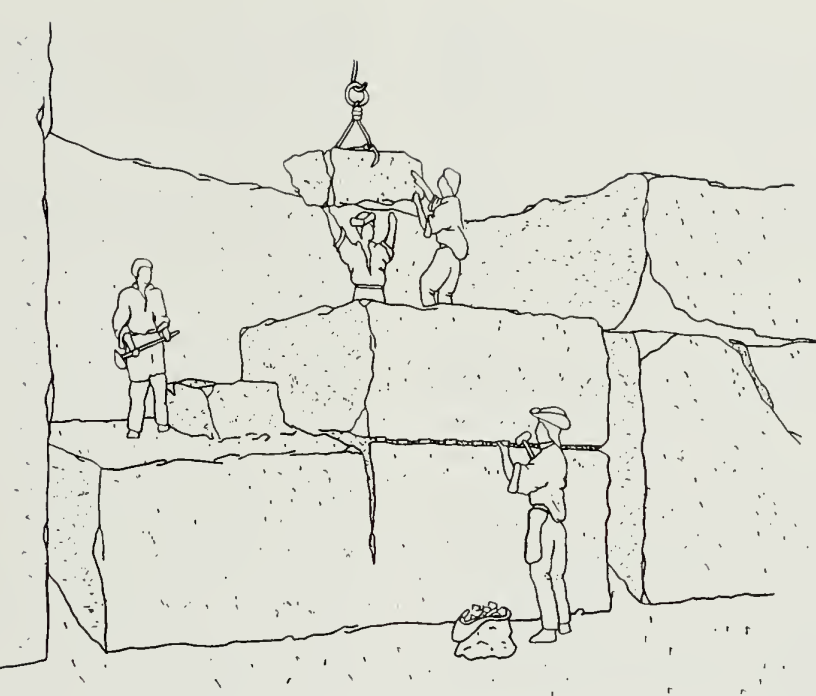
quarrying Aquia sandstone between 1791-1825 required human muscle and simple equipment for lifting and moving stones
Source: Lee H. Nelson, White House Stone Carving: Builders and Restorers (p.5)
When the blocks dried, the stone hardened. The Surveyor of Public Buildings, Benjamin Henry Latrobe, indicated in 1805 that he was satisfied with the quality of the sandstone but noted some problems:6
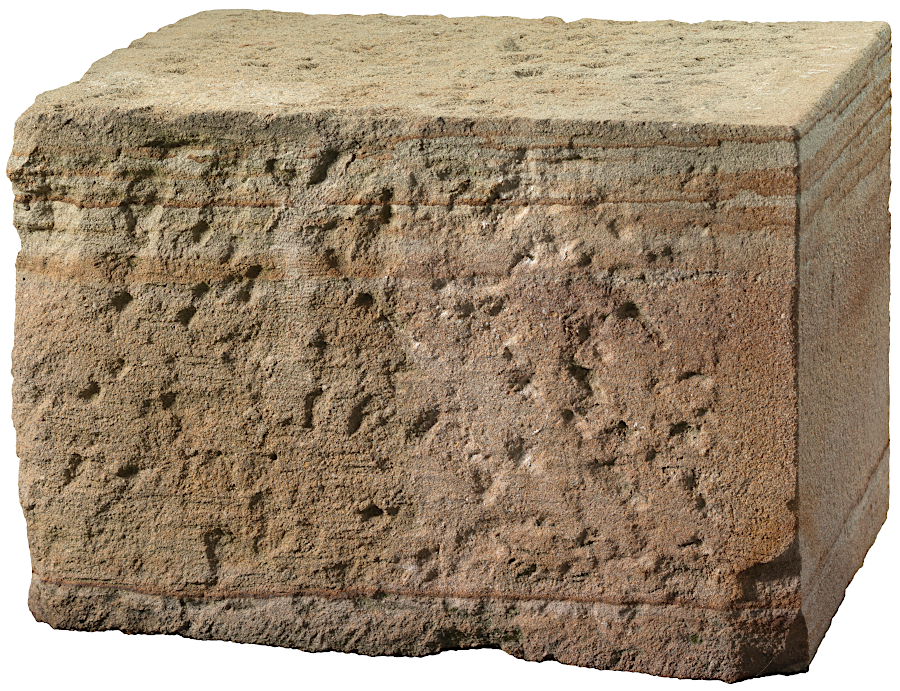
only one side of the sandstone block, exposed on the exterior of the Capitol, was made smooth
Source: Smithsonian Institution, Block of Aquia Creek sandstone removed from the East Front of US Capitl
Despite Latrobe's praise, Aquia sandstone is barely lithified into rock and is quite porous. In the winter, water that seeps into the stone can freeze and create cracks from expansion into ice. To avoid that problem on the stone exterior of the new "Presidents House" in Washington, DC, a lime-based whitewash was applied in 1798 when the building was first completed.
The whitewash wore off and was re-applied regularly. By the time James Madison became president in 1808, the structure was being called the "white house." The British burned the building in 1814 and the building was coated in white lead paint in 1818, but the name "white house" had been established before the paint replaced the whitewash coating. President Theodore Roosevelt made "White House" the official name of the building in 1901.7
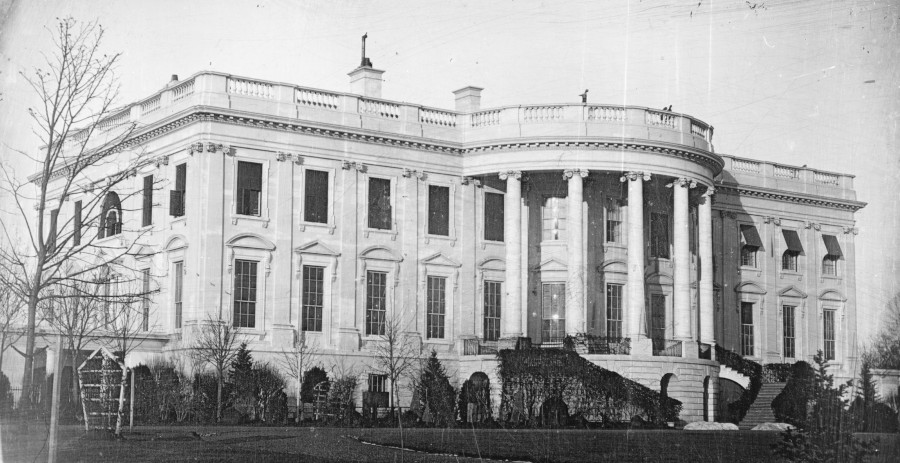
the Aquia sandstone used for the White House had to be whitewashed (starting in 1798) and then painted (starting in 1818) to reduce cracking and spalling
Source: Library of Congress, President's house (i.e. White House), Washington, D.C., showing south side, probably taken in winter (c. 1846)
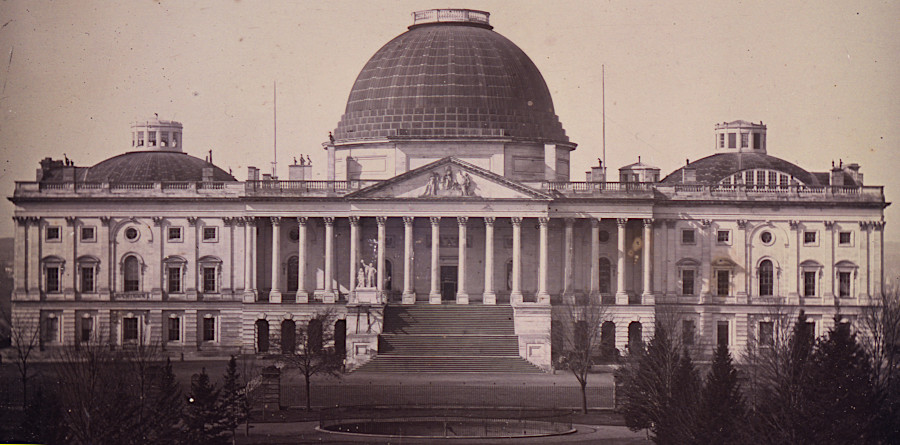
the original exterior and columns on the East Front of the Capitol were made from Aquia sandstone
Source: Library of Congress, United States Capitol, Washington, D.C., east front elevation (by William Strickland, 1814)
Benjamin Latrobe designed the US Capitol and President Thomas Jefferson oversaw its initial construction. The domed ceiling of the House of Representatives was supported by columns of Aquia sandstone 26'8" high.
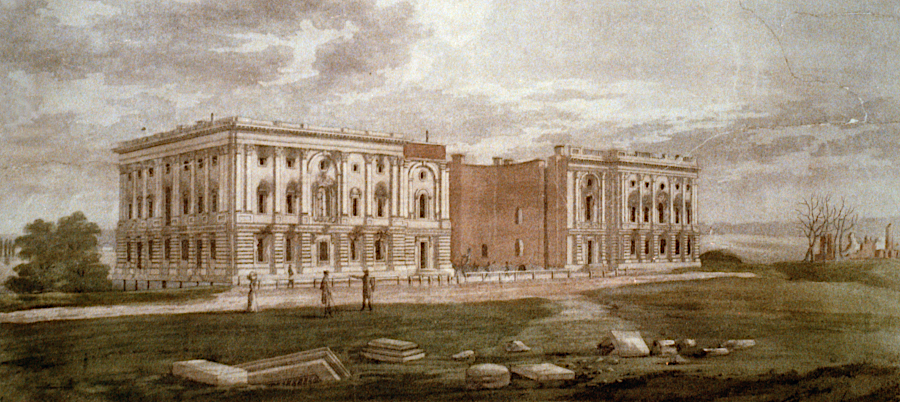
the Aquia sandstone walls survived the British burning of the Capitol in 1814
Source: Library of Congress, A view of the Capitol after the conflagration of the 24th August 1814 (1791)
The Capitol's original exterior with Aquia sandstone in now covered in marble. The former exterior walls are now inside, after a 32' extension of the East Front was completed in 1958-1962. Restoration of the West Front, completed in 1987, involved replacing 40% of the sandstone blocks with limestone.
The original sandstone on the West Front had decayed despite being covered by 30 layers of paint. Paint protected those spots in the stone where feldspar had decayed to kaolin by blocking water infiltration. However, paint also blocked water from evaporating out of the stone and led to flakes spalling off the surface. A 1957 study of the exterior Aquia sandstone walls, where physical tests were made on nine samples of sandstone taken from the exterior walls of the U.S. Capitol, concluded:8
The 24 sandstone columns were placed on the East Portico in 1828. That ended use of Aquia sandstone from Government Island, and the quarries there were never used again as a source of building stone. Most of the easy-to-access, high-quality stone had been removed. Reopening the quarries was considered in 1849 to supply stone for the construction of the Smithsonian Castle, but it was built using Triassic sandstone from a quarry on Seneca Creek in Maryland.
The 1828 columns were replaced in 1958 when the East Front was extended. Those columns were stockpiled until a new location was found for them in 1984 at the US National Arboretum. With financial support from private donors, 22 of the columns were re-installed at the arboretum in 1990. They sit on a base of Aquia sandstone that was once part of the US Capitol's East Front steps. Two columns were damaged during storage; they are displayed in the arboretum's Azalea Garden.9
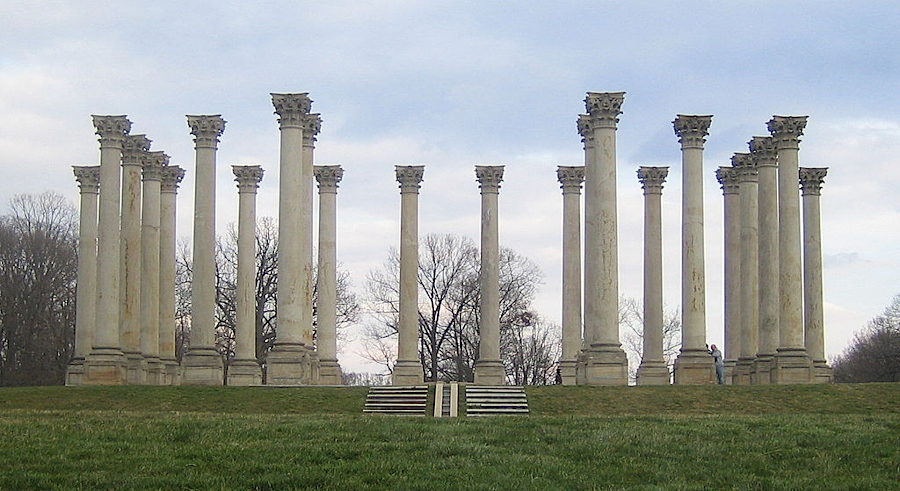
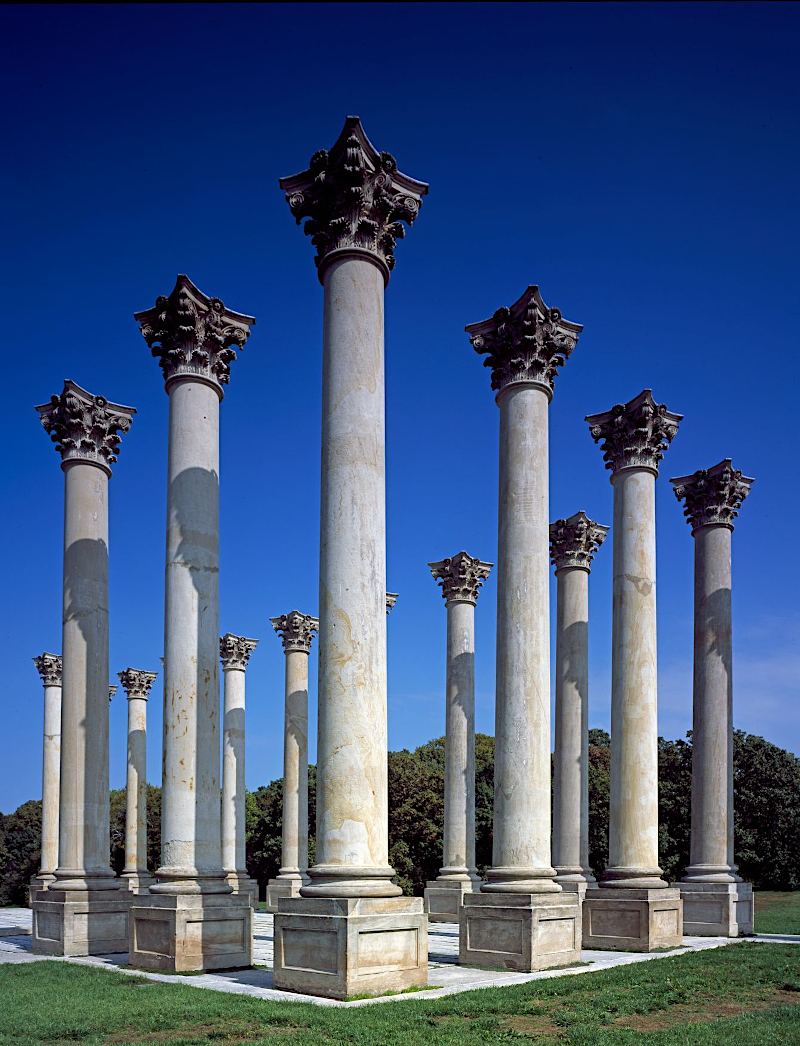
22 of the 24 original (1828) columns of the Capitol are now reinstalled at the US National Arboretum
Source: Wikipedia, National Capitol Columns (by D Monack) and Library of Congress, The Capitol columns at the Washington Arboretum, Washington, D.C.
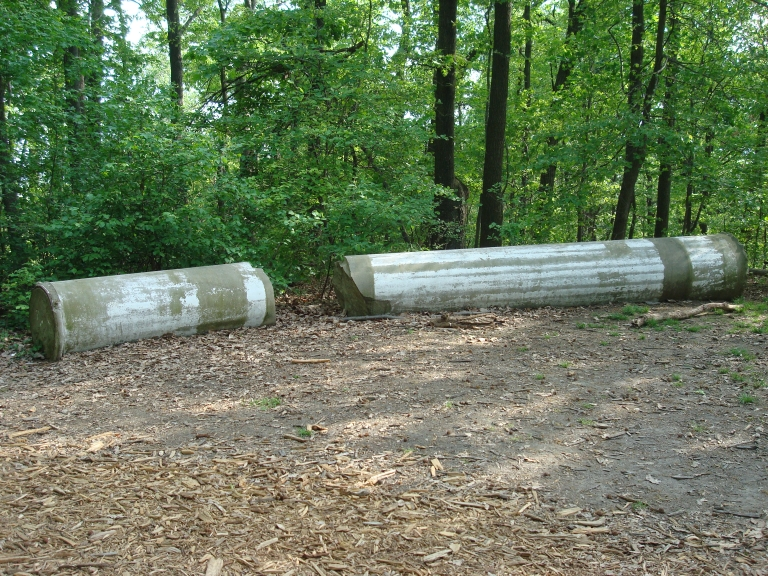
two of the 24 original (1828) columns of the Capitol were damaged, and not placed in a vertical position at the US National Arboretum
Source: Wikipedia, National Capitol Columns (by Kkopczyk)
The gatehouses originally built for the US Capitol in Washington, DC around 1827-29 also were constructed from Government Island sandstone. Unlike the White House, the gatehouses have not been protected by any coating. Their decayed appearance is obvious to tourists who note the structures at their current locations on Constitution Avenue at 15th and 17th Streets.10
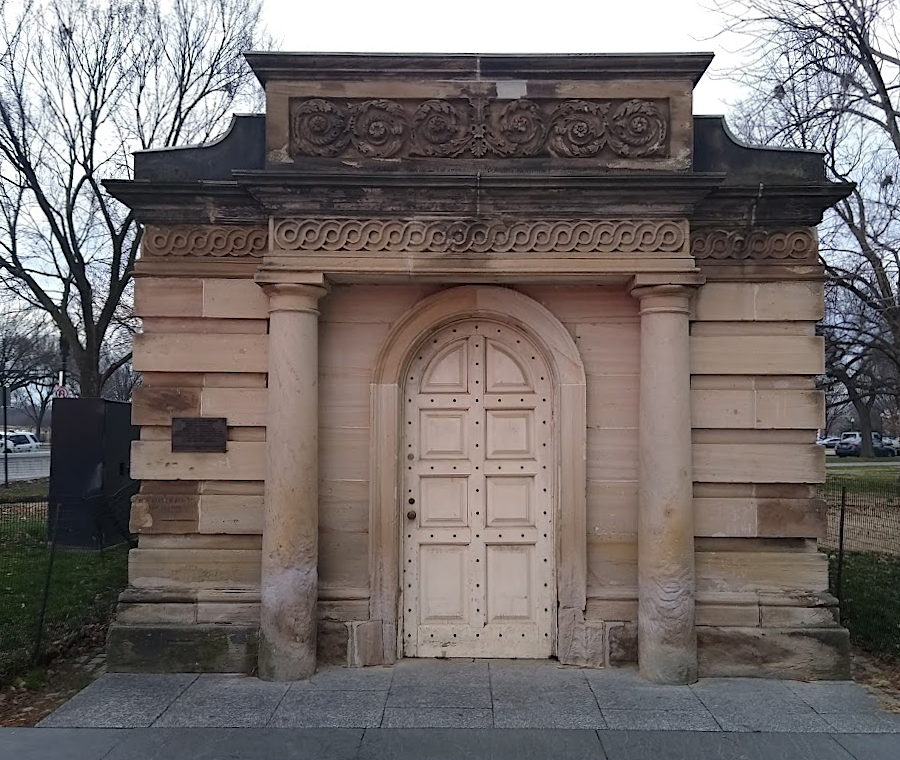
Bulfinch gatehouse at West Entrance for US Capitol, now at 15th and Constitution Avenue
In addition to the quarries at Freestone Point and Government Island, multiple other quarries were opened to excavate Aquia sandstone. Governor Alexander Spotswood used the sandstone to build his "Enchanted Castle" at Germanna in 1718. Spotswood recognized there was sandstone available to mine on his tract near modern Chancellorsville, 7-10 miles east of his Germanna home. He may have shipped iron from his Tubal Furnace via wagon to a wharf on the Rappahannock River at Massaponax, and filled the wagon with sandstone from New Post Quarry there for the return trip.
On the Enchanted Castle, the white Berea (Aquia) sandstone was primarily used for decorative elements on the exterior. Most of the exterior was brick, Quantico Formation schist, and Buffards Formation slate. Spotswood was ahead of his time, and built his Georgian-style mansion house on the far western edge of the colonized area far from other Virginia gentry. Other mansion houses built to create an impression did not use Aquia sandstone or slate until the 1730's.11
The boundary stones marking the edges of the District of Columbia were made from Aquia sandstone excavated at Government Island. Aquia sandstone was also used in Aquia Church (Stafford County), Christ Church (Alexandria), and Pohick Church at Lorton (Fairfax County).
Aquia sandstone decorated Governor Thomas Nelson's family home in Yorktown, the Tayloe mansion house at Mount Airy, George Washington's Mount Vernon, George Mason's Gunston Hall, John Carlyle's house in Alexandria, Williams Ordinary in Dumfries, and the Old Stone Warehouse on Sophia Street in Fredericksburg.
John Tayloe II used iron-rich red sandstone from the Northern Neck to build Mt. Airy and Menokin. He imported Aquia sandstone from further up the Potomac River to accent the edges of his house with white quoins. He reversed the color scheme when he built Menokin for his daughter Rebecca and son-in-law Francis Lightfoot Lee, exposing the red sandstone on the quoins and covering it with white plaster on the sides of Menokin.
The sandstone was floated south to Richmond for use in Monumental Church and to Princess Anne County (now Virginia Beach) for the foundations of the first lighthouse at Cape Henry, authorized by the US Congress in 1790 and completed in 1792. The New Point Comfort Lighthouse in Mathews County use Aquia sandstone as well.12

James Hoban built a simple rectangular block for the President's House from Aquia Sandstone, and Benjamin Henry Latrobe designed the addition of porticos on the northern and southern sides
Source: Library of Congress, The White House ("President's House") Washington, D.C. East front elevation (by Benjamin H. Latrobe, 1807)
Aquia sandstone was used for the cenotaphs at Congressional Cemetery. The Christ Church Washington Parish donated lots for burial of government officials, and the cemetery was known as the "National Burial Ground" before Arlington Memorial Cemetery was developed. Ultimately 169 cenotaphs, inscribed marble panels on a block of Aquia sandstone, were installed to commemorate members of the US Congress and top Federal officials who died in office.
Only 50 cenotaphs were associated with actual burials. By 1835, most bodies were shipped back to the home of the official; most cenotaphs were just a set of stones erected in their memory. Construction of new cenotaphs ended in 1876. A member of Congress made clear that the design was unpopular:13
Squatters occupied Government Island after quarrying was abandoned in 1825. After the Civil War the Commonwealth of Virginia assumed ownership without ever acquiring a deed from the US Government. The state transferred the property to a private owner in 1879. The ownership issue was resolved in 1963 by a public auction to a private landowner.14
The Aquia Harbor subdivision was built in the 1970's and 80's. By 1979, the Westinghouse Corporation owned Government Island and lots were being sold for new homes. A local resident, Jane Conner, shared her research into the history of Government Island and plans to build houses there came to a stop.
Stafford County bought the site of Government Quarry in 1998. The Stafford County Boy Scouts acquired the one acre once owned by Robert Steuart.
The county built bridges/trails/interpretive signs and opened Government Island as a public park. An adventure lab based on geocaching, with five different points of interest, was established there in 2020.15
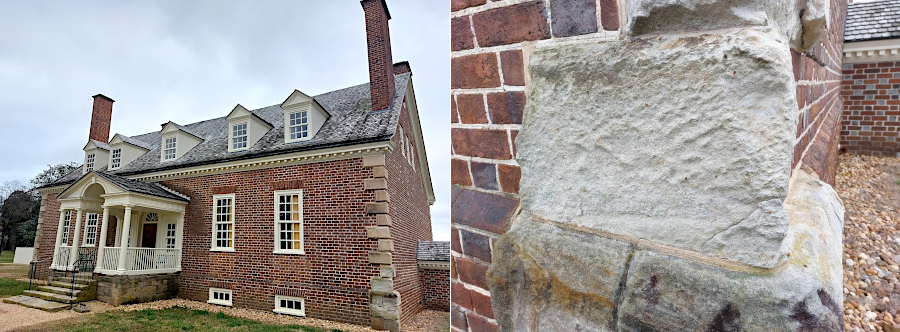
sandstone quoins at Gunston Hall have decayed since initial construction in the 1750's
Aquia sandstone is still being used in new construction. When the White House was rebuilt between 1949-1952, several tons of stone were donated to Mount Vernon. Much was used to reconstruct the greenhouse which had burned down in 1835. Other pieces were used over the years to repair the piazza and steps of George Washington's home, and for the cornerstones of the Ford Orientation Center and the Donald W. Reynolds Museum and Education Center.
Archeologists found the boyhood home of George Washington at Ferry Farm in 2007, after unearthing Aquia sandstone that showed the location of the cellar. When a replica of the house in which George Washington lived was built in 2016-2017, Aquia sandstone was used as cladding. The stone was carved from large blocks which had been excavated in a road project and transported to Ferry Farm for later use.16
Source: George Washington Foundation, Building George's House: Laying the Stone Foundation
Access to Aquia sandstone is very limited today. Old quarries near navigable water have been surrounded with high-priced homes with water views; those quarries can not be re-opened as industrial sites. When St. George's Episcopal Church in Fredericksburg repaired its steps, it had to use Ohio sandstone to replace deteriorated pieces of Aquia sandstone installed in 1849.17
Masons who repaired the Cape Henry Lighthouse were able to use Aquia sandstone which had been brought to the site in 1774. The first attempt to construct the lighthouse was abandoned at the start of the American Revolution. The builders of the 1792 lighthouse found some of the stone to be buried too deep in the dunes and used mostly new material. For the repairs in 2025, blocks of sandstone brought in 1774 were excavated and processed.18
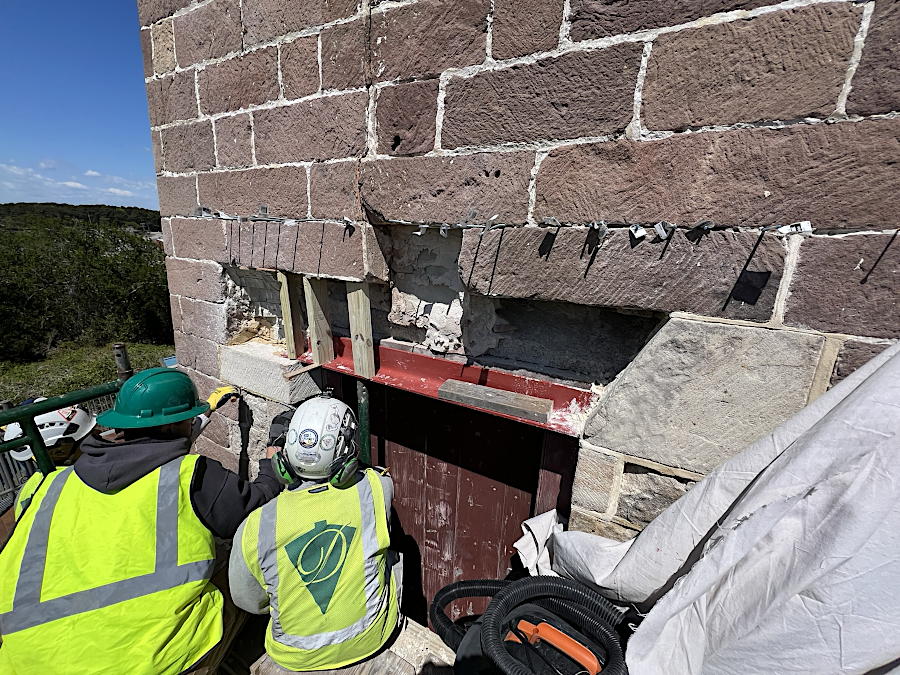
Aquia sandstone was used to complete the Cape Henry Lighthouse in 1792 and repair it in 2025
Source: Preservation Virginia, The White House ("President's House") Washington, D.C. East front elevation
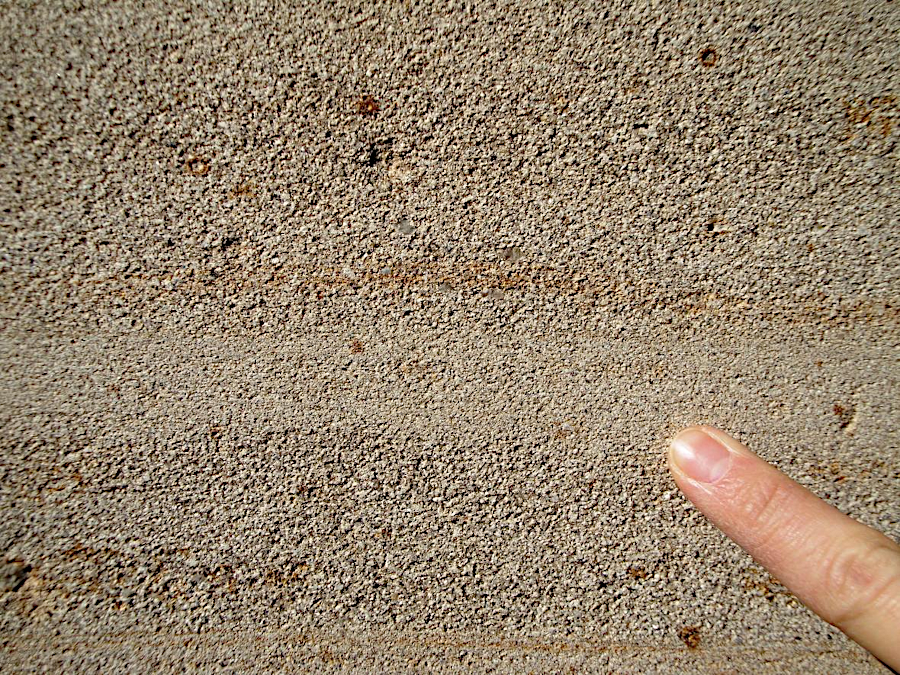
Aquia sandstone is a sedimentary rock, composed primarily of grains of silica and feldspar
Source: US Geological Survey (USGS), Aquia Creek Sandstone
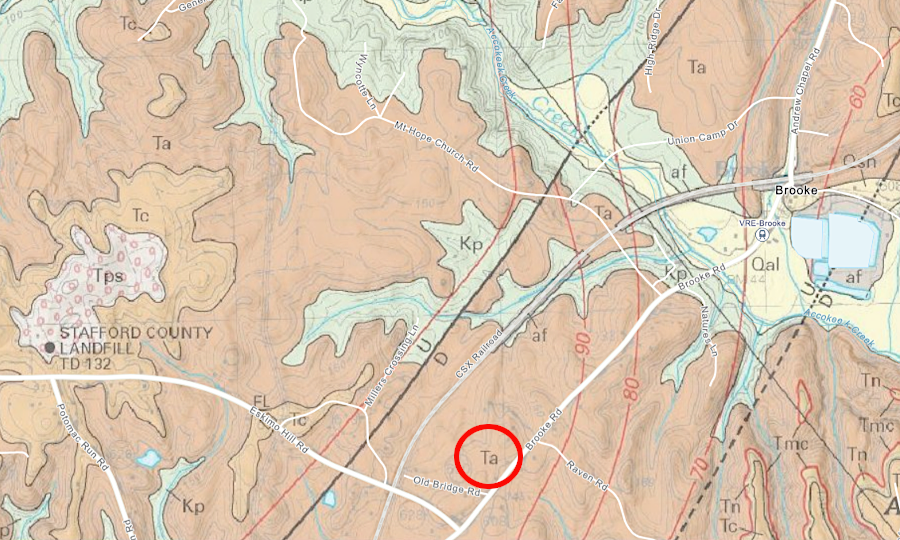
Aquia Formation (Ta) is exposed on the surface around Accokeek Creek (Stafford County)
Source: US Geological Survey (USGS), Geologic map of the Stafford quadrangle, Stafford County, Virginia (2007)
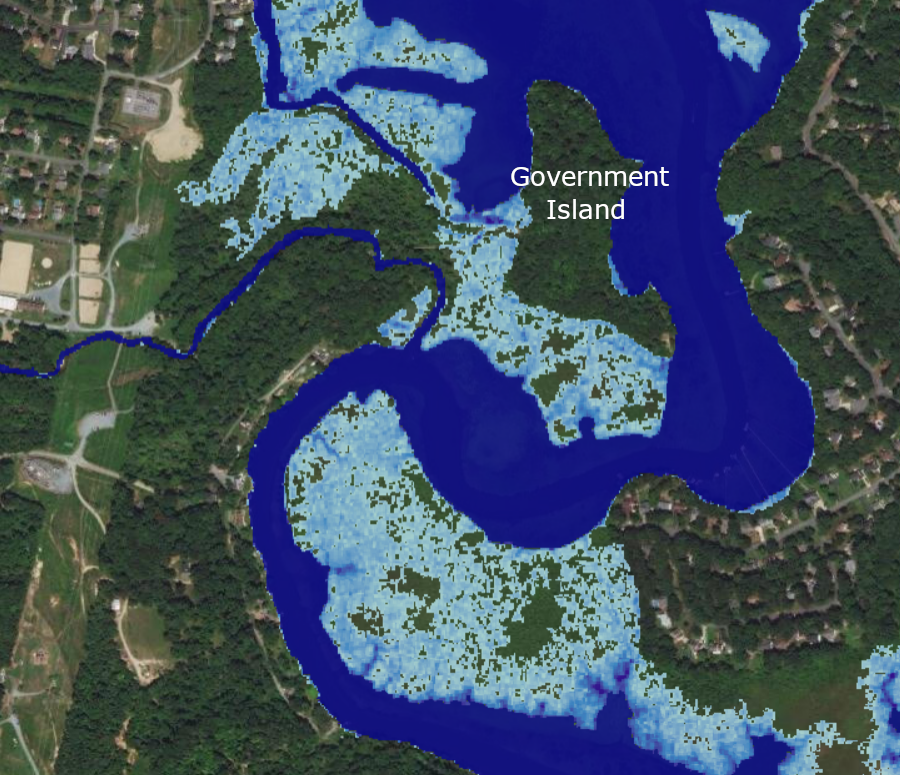
with one more foot of sea level rise, Government Island will be isolated from the shoreline
Source: National Oceanic and Atmospheric Administration (NOAA), Sea Level Rise Viewer